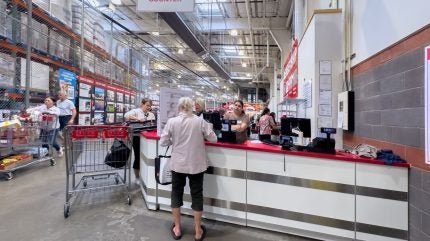
The figure marks 15.8% of annual sales made by retailers this year and is in line with 16.9% last year, when retail returns totalled $890bn.
“Returns are no longer the end point of a transaction,” NRF vice president of industry and consumer insights Katherine Cullen said. “They provide an opportunity for retailers to create a positive experience for customers and can translate to brand loyalty. Retailers are constantly evolving and working to meet customer expectations, and they recognise the importance the returns process plays.”

Discover B2B Marketing That Performs
Combine business intelligence and editorial excellence to reach engaged professionals across 36 leading media platforms.
While overall retail return rates may remain steady, some areas are facing more pressure than others. According to the report, an estimated 19.3% of online sales will be returned in 2025.
Additionally, as Gen Z’s influence grows, so does their impact on returns. Those between the ages of 18 and 30 made 7.7 returns of online purchases in the last 12 months, on average, more than any other generation.
Consumer expectations are increasing around returns. Free returns are a major draw for shoppers, with 82% citing them as a major consideration when making a purchase, up from 76% last year. Consumers also value immediacy, with 76% saying they are more likely to choose a return option that provides an instant refund or exchange.
Still, a poor returns experience can deter future purchases. About 71% of consumers say they are less likely to shop with a retailer again after a poor experience, up from 67% in 2024. And four out of five said they will share their negative experience with friends and family, potentially amplifying the impact.

US Tariffs are shifting - will you react or anticipate?
Don’t let policy changes catch you off guard. Stay proactive with real-time data and expert analysis.
By GlobalDataRetailers surveyed indicate their top priorities for 2026 are increasing online sales and reducing return rates. The top reasons retailers charge for returns are increases in the cost of operations to process returns (40%), increases in carrier shipping costs (40%) and economic uncertainty and risk of tariffs (33%). Overall, nearly two-thirds (64%) of merchants say updating their returns process in the next six months is a priority.
And return fraud is an ongoing concern for the industry. The report found that 9% of all returns are fraudulent. Meanwhile, consumers, especially younger consumers, continue to make returns choices that are costly to retailers. Close to two-thirds of consumers admit to participating in at least one costly returns behaviour, from wardrobing and “bracketing” to sending back different items or empty boxes. Just under half (45%) believe “bending the truth” is acceptable when making returns, especially if they are unsatisfied with their purchase.
“Return policies and their overall process have transformed into a strategic touchpoint for retailers, influencing how younger consumers shop from the outset,” said David Sobie, co-founder and CEO of Happy Returns. “To stay competitive amid rising return rates and behaviours like bracketing, retailers must modernise their reverse logistics to enhance customer satisfaction, reduce fraud and safeguard their operations in today’s high-pressure retail landscape.”





